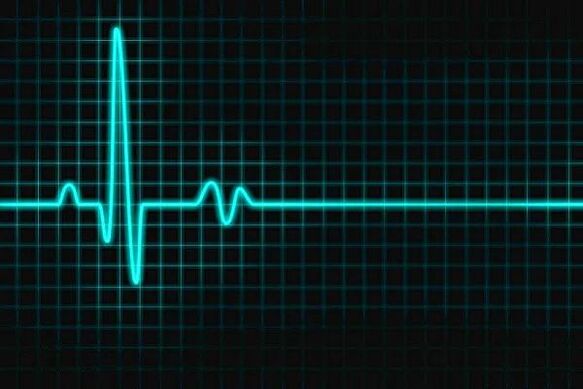
Alcoholism can rightly be seen as a human problem. However, not everyone can say exactly when and how this disease can manifest itself. Meanwhile, alcoholism, like any other disease, has several stages.
Altogether there are 4 stages of alcoholism. Not only the duration and effectiveness of treatment, but also the final result depends on the degree of neglect and the situation in the patient's environment.
After all, many who have recovered return to old habits after a few years.
The point is not in the treatment, but in the wrong approach to the root cause of this problem, the lack of knowledge of the patient's character traits, as well as insufficient psycho-emotional support from loved ones and friends.
The initial stage of alcoholism: causes and treatment
Read more: What is alcoholism?
The first stage of alcoholism is not always perceived as the beginning of personality decline and the progression of the disease as such. Treatment and its duration may depend on such parameters as:
- patient's age;
- stage of the disease;
- mood and atmosphere in the family;
- predisposition (heredity);
- Surroundings;
- stability/instability of the human psyche;
- perception of the problem as such not only by the patient but also by all his friends and relatives;
- Patient gender (male or female).
- alcohol doses are gradually increased;
- Reception of strong drinks is possible even for a minor reason;
- A person loses control, it is difficult to control movements and thoughts after drinking;
- Aggression towards acquaintances and friends is more common;
- Cannot stop even after voiding accumulated alcohol (vomiting);
- There is a severe hangover with pains in the head;
- So far he reacts negatively to a hangover (rejection of alcohol);
- Contradictions in deeds and words, both when drunk and when sober;
- Negative attitude towards alcoholics, does not consider their problem important.

treatment of the initial stage

Also, do not miss the effects of alcohol on all human organs. Therefore, understanding the problem helps in researching:
- Diseases of the liver and pancreas (heaviness, nausea, vomiting, pain and colic, flatulence, indigestion);
- Vegetovascular disease (bloating of veins, feeling of heaviness in the legs, swelling and pain after a day);
- Hypertensive disorders (sudden jumps in pressure, loss of strength, severe headache, nausea);
- Nervous disorders (headache, cramps, swelling, irritability, difficulty sleeping, shaking hands, aggression, irritability).
How to determine the stage of alcoholism? You cannot figure this out on your own without the help of a qualified specialist. The first signs should warn you. Early diagnosis and treatment is the basis for the success of productive treatment.
The second stage of alcoholism: what are the symptoms and methods of treatment

The patient reacts sharply to criticism and comments from outside, is aggressive and direct in expression.
The degree of alcoholism and its treatment differ from case to case. One will need more psychological help, the second will need harsh conditions and limits that he cannot cross. However, one thing is becoming clear: it is not possible without outside help. The second stage of alcohol dependence is treated through an integrated approach:
- Medicinal cleansing of the body. An important step that allows you to get rid of accumulated toxins. Intoxication of the body in this case is high, and drugs not only allow you to cope with the side effects of a large amount of alcohol, but also accelerate the process of decomposition of ethanol in the blood plasma.
- Aversive treatment - drugs are administered intravenously to develop alcohol aversion. Often such drugs do not cause discomfort in a non-drinker. But taking alcohol and such a drug at the same time causes vomiting, nausea, severe headaches and rejection at the subconscious level;
- help of a psychologist. After all the manipulations on the patient's body have been performed, the brain has been cleared of the effects of ethanol, it's time to proceed to the main stage of treatment - psychological support and adjustment to normal life.
How long such treatment can last is an individual characteristic of the patient. At this stage, it is important to identify the root causes of alcohol cravings.
After all, the effect of drugs will not reduce the psycho-emotional dependence on relaxation that can be achieved through alcohol consumption.
This stage and its effectiveness depend entirely on the professionalism of the doctor and the willingness to accept the result of all loved ones. Only in this case it is possible to avoid the recurrence of the disease.
The third stage of alcoholism: the problem of society and not only

The third stage of alcoholism is no longer just a problem for the patient's family and close circle. This is a problem of society as a whole: a person degrades, violates all existing norms and rules of communication, does not respond to comments and requests from loved ones, is a "burdensome" factor for the family. In fact, the third stage of alcoholism forces a personoften leads to refusal from work and neglecting the wishes of relatives and friends. This means that such a patient cannot afford to buy expensive alcoholic beverages. As a result, funds, expensive equipment and food are stolen from home. In addition, the third stageof alcoholism is accompanied by additional features such as:
- Deformation of appearance: thin arms and legs, large torso and abdomen, burgundy or gray skin with obvious venous obstruction, swelling of all kinds on all limbs and under the eyes, tooth loss, blackening;
- The psyche is disturbed: inappropriate reaction to simple things, unwillingness to socialize, baseless aggression, unwillingness to change anything;
- Alcohol is the basis of nutrition and replaces any healthy human diet. How much a person can drink depends in part on their configuration;
- speech distortion;
- paralysis of certain parts of the body, more often the face, arms, legs;
- Health problems: hepatitis, chronic pancreatitis, cancer, indigestion, urinary and fecal incontinence;
- Alcohol resistance (fewer doses but more common).
Alcohol consumption before and during pregnancy
Treating alcoholism at this stage is a difficult task and not always effective. First of all, this is due to the complete deformation of the human psyche, the reassessment of its values and priorities in life.
Often such an addict does not set any goals other than obtaining the next serving of alcohol.
However, all of the first three stages of alcoholism can only be treated if this problem is properly addressed.
Which stages are difficult to treat?

An important sign of the third stage of alcoholism is the threat to human life: even after treatment, 80% die as a result of long-term intoxication of the body and irreversible processes of change in internal organs. Depletion of heart tissue, vascular deformities, chronic diseases of the liver, kidneys and pancreas (in women also of the reproductive system) create dangerous conditions for a good future life of the healed. Supporting the most affected organs after treatment is the main task.
The final stage of alcoholism: no options

Alcoholism is an insidious disease. She sneaks up on you the moment it seems like the whole world is turning against you. Often the first stages of alcoholism are skipped, not perceived as a real problem. And then the progression and speed of development of complications is inevitable. Years can pass from the moment of transition from the first to the fourth stage.
If the first signs are not recognized and skipped, the complexity of the regimen increases every day. Fourth degree alcoholism is more of a sentence. Life counts months and weeks.
The body is completely exhausted and the organs can no longer cope with the basic functions of metabolism. But no judgment exclusively for sick people.
This is a diagnosis for those who could not help in time, lend a helping hand and do not perceive the disease as a problem.
From the fourth level, unfortunately, no more help can be given. The patient is not amenable to persuasion or hospitalization. The worst thing is that the level 4 person in front of you has nothing to do with the person you have ever known.
His brain is so distorted by alcohol that it's impossible to recognize a person you knew. Complete dismantling of the subconscious, the basic instincts are replaced by new ones (drinking). Even a professional psychologist and hypnosis will not help to get rid of the problem.
Alcoholism is a disease. It's important to remember. Keep this in mind and know what can be done to avoid the unenviable fate of an alcoholic whom all relatives and friends have turned their backs on, having erased him from the living world in advance.
alcoholism
Alcoholism is a disease associated with systematic alcohol abuse and is characterized by intoxicated mental dependence, somatic and neurological disorders, and personality deterioration. The disease can also progress with alcohol abstinence.
In the CIS, 14% of the adult population abuse alcohol and another 80% drink alcohol moderately, which is a result of certain drinking traditions that have developed in society.
Factors such as conflicts with loved ones, an unsatisfactory standard of living and the inability to fulfill oneself in life often lead to abuse. At a young age, alcohol is used to find inner comfort and courage and to overcome shyness. In middle age, it is used to relieve fatigue, stress and get away from social problems.
Constant resorting to this method of relaxation leads to persistent addiction and the inability to find inner solace without alcohol intoxication. Depending on the degree of dependence and symptoms, several stages of alcoholism are distinguished.
stages of alcoholism
The first stage of alcoholism
The first stage of the disease is characterized by an increase in doses and frequency of alcohol consumption. There is a syndrome of altered reactivity, in which alcohol tolerance changes. The protective reactions of the body against overdose disappear, in particular, there is no vomiting when drinking large amounts of alcohol.
With severe poisoning, palimpsests are observed - lapses in memory. Psychological dependence manifests itself as a feeling of dissatisfaction when sober, constant thoughts of alcohol, and a mood elevation before drinking.
The first stage lasts from 1 to 5 years while attraction is controllable as there is no physical dependence syndrome. A person does not deteriorate and does not lose working capacity.
Complications of alcoholism of the first stage are manifested mainly in the liver, alcoholic fat degeneration occurs.
Clinically, it almost does not manifest itself, in some cases there may be bloating in the stomach, flatulence, diarrhea. A complication can be diagnosed by an increase and dense consistency of the liver.
On palpation, the edge of the liver is rounded, it is somewhat sensitive. With abstinence, these symptoms disappear.
Complications of the pancreas are acute and chronic pancreatitis. At the same time, abdominal pain localized on the left and radiating to the back, as well as loss of appetite, nausea, flatulence and unstable bowel movements are noted.
Often alcohol abuse leads to alcoholic gastritis, in which there is also a lack of appetite and nausea, pain in the upper abdomen.
Second floor
Second stage alcoholism has a progression period of 5 to 15 years and is characterized by an increase in altered reactivity syndrome.
Alcohol tolerance reaches its maximum, the so-called pseudo-binge drinking occurs, its frequency is not related to the patient's attempts to get rid of alcohol addiction, but to external circumstances, for example, lack of money and inability to get alcohol.

The sedative effect of alcohol is replaced by an activating one, memory lapses from drinking large amounts of alcohol are replaced by complete amnesia of the end of intoxication. At the same time, daily drunkenness is explained by the presence of a syndrome of psychological dependence; In a sober state, the patient loses the ability to do mental work, and mental activity is disorganized. There is a syndrome of physical alcohol dependence that suppresses all feelings except the craving for alcohol, which becomes uncontrollable. The patient is depressed, irritable, unable to work, after drinking alcohol these functions return to their place, but control over the amount of alcohol is lost, which leads to excessive intoxication.
Treatment of second-stage alcoholism should be carried out in a specialized hospital, a narcologist or a psychiatrist.
Sharp refusal to drink alcohol causes somatoneurological symptoms of alcoholism such as exophthalmos, mydriasis, hyperemia of the upper body, trembling of the fingers, nausea, vomiting, defecation, heart, liver and headaches.
There are mental symptoms of personality degradation, weakening of the intellect, delusions. Often there is anxiety, night terrors, seizures, which are harbingers of acute psychosis - delirium tremens, popularly called delirium tremens.
Complications of alcoholism of the second degree from the side of the liver are represented by alcoholic hepatitis, often in a chronic form. The disease occurs more often in a persistent than in a progressive form.
Like first-degree complications, hepatitis rarely presents with clinical symptoms. It is possible to diagnose a complication of gastrointestinal pathology, heaviness appears in the epigastric region, right hypochondrium, mild nausea, flatulence is observed.
On palpation, the liver is compressed, enlarged, and slightly painful.
Alcoholic gastritis in the second stage of alcoholism can have symptoms masquerading as manifestations of withdrawal symptoms, the difference is painful repeated vomiting in the morning, often with an admixture of blood. There is pain in the epigastric region on palpation.
After prolonged binge, acute alcoholic myopathy develops, weakness, swelling in the muscles of the hips and shoulders appear. Alcoholism most commonly causes non-ischemic heart disease.
Third section
Third stage alcoholism is significantly different from the previous two, the duration of this stage is 5-10 years. This is the final stage of the disease and, as practice shows, most often ends in death. Alcohol tolerance decreases, intoxication occurs after small doses of alcohol. Binges end with physical and mental exhaustion.

In a state of intoxication, emotional instability manifests itself, which unpredictably replaces the symptoms of alcoholism, cheerfulness, irritability and anger.
Deterioration of personality, decrease in intellectual abilities, disability leads to the fact that an alcoholic who has no money for alcohol uses substitutes, sells things, steals. The use of such substitutes as denatured alcohol, cologne, polish, etc. leads to serious complications.
Complications of alcoholism of the third degree are most often represented by alcoholic cirrhosis of the liver. There are two forms of alcoholic cirrhosis - compensated and decompensated form.
The first form of the disease is characterized by persistent anorexia nervosa, bloating, fatigue and apathetic mood. There is a thinning of the skin, white spots and spider veins appear on them.
The liver is enlarged, dense, has a sharp edge.
The patient's appearance changes sharply, there is a sharp loss of weight, hair loss. The decompensated form of cirrhosis of the liver differs in three types of clinical symptoms.
These include portal hypertension leading to hemorrhoidal and esophageal bleeding, ascites - accumulation of fluid in the abdominal cavity. Jaundice often occurs, in which the liver is greatly enlarged, in severe cases there is liver failure with the development of coma.
The patient has an elevated level of melanin, which gives the skin an icteric or earthy tint.
Diagnosis of alcoholism
A diagnosis of alcoholism can be suspected by a person's appearance and behavior. Patients look older than they are, over the years the face becomes hyperemic, skin turgor is lost. The face acquires a special kind of willful promiscuity through the relaxation of the sphincter muscle of the mouth. In many cases there is uncleanliness, carelessness in clothing.
The diagnosis of alcoholism turns out to be fairly accurate in most cases, even if the patient's surroundings are analyzed rather than the patient himself. Family members of a patient with alcoholism have a number of psychosomatic disorders, neurotization or psychotization of a non-drinking spouse, and pathologies in children.
The most common pathology in children whose parents systematically abuse alcohol is congenital cerebral insufficiency. Often such children have excessive mobility, they are not focused, they have a craving for destruction and aggressive behavior.
In addition to the congenital pathology, the child's development is also affected by the traumatic situation in the family. Children have logoneurosis, enuresis, night terrors, and behavioral problems.
Children are depressed, prone to suicide attempts, they often have difficulties in learning and communicating with their peers.
In many cases, pregnant women who abuse alcohol experience the birth of an alcoholic fetus. Fetal alcohol syndrome is characterized by gross morphological disorders. Most often, the pathology of the fetus consists in the irregular shape of the head, body proportions, spherical, deep-set eyes, underdevelopment of the jawbones and shortening of the long bones.
treatment of alcoholism
We have already briefly described the treatment of alcoholism depending on its stages. In most cases, a relapse can occur after treatment.
This is due to the fact that treatment is often aimed only at eliminating the most acute manifestations of alcoholism. Without properly conducted psychotherapy, lack of support from loved ones, alcoholism repeats itself.
But, as practice shows, psychotherapy is an important part of treatment.

The first stage of treatment for alcoholism is the elimination of acute and subacute conditions caused by intoxication of the body. First, the high is broken and the withdrawal symptoms eliminated. In later stages, therapy is carried out only under the supervision of medical personnel, since the delirium syndrome that occurs when drinking is stopped requires psychotherapy and a set of sedatives. Alleviation of acute alcohol psychosis consists of quickly putting the patient to sleep with dehydration and cardiovascular support. With severe alcohol intoxication, treatment of alcoholism is carried out only in specialized hospitals or in psychiatric departments. In the early stages, anti-alcohol treatment may be sufficient, but more often when alcohol is abandoned, there is a deficit in neuroendocrine regulation, the disease progresses, leading to complications and organ pathologies.
The second stage of treatment is aimed at establishing remission. There is a complete diagnosis of the patient and therapy for mental and somatic disorders. Therapy at the second stage of treatment can be quite peculiar, its main task is to eliminate somatic disorders, which are crucial in the development of a pathological craving for alcohol.
Non-standard methods of therapy include the Rozhnov technique, which consists in emotional stress therapy. A good treatment prognosis results from the hypnotic effect and the psychotherapeutic discussions preceding it.
During hypnosis, the patient is instilled with an aversion to alcohol, a reaction of nausea and vomiting to the taste and smell of alcohol. The method of verbal aversive therapy is often used.
It consists in adjusting the psyche by the method of verbal suggestion and responding with a vomiting reaction to drinking alcohol, even in an imaginary situation.
The third stage of treatment involves prolonging remission and returning to a normal lifestyle. This stage can be considered the most important for the successful treatment of alcoholism. After the two previous phases, the person returns to his former society, to his problems, to friends who are usually also addicted to alcohol, to family conflicts.
This has a greater impact on the recurrence of the disease. In order for a person to independently eliminate the causes and external symptoms of alcoholism, long-term psychotherapy is required. A positive effect is achieved by autogenic training, they are often used for group therapy.
The training consists in the normalization of autonomic disorders and the elimination of emotional stress after treatment.
Behavior therapy, the so-called lifestyle correction, is used. A person learns to live in a sober state, solve his problems and acquire the ability of self-control. A very important step in restoring normal life is achieving mutual understanding in the family and understanding of their problem.
For successful treatment, it is important to achieve in the patient the desire to get rid of alcohol addiction. Compulsory treatment does not produce the same results as voluntary treatment.
Still, refusing treatment requires the local narcologist to compulsorily refer the patient to the LTP for treatment.
Therapy in the general medical network does not give positive results, since the patient has open access to alcohol, he is visited by drunk friends, etc.
With the onset of alcohol abuse in adulthood, an individual approach to the choice of therapy is required. This is because the somato-neurological symptoms of alcoholism appear much earlier than addictions and mental disorders.
Mortality from alcoholism is mostly associated with complications. There is decompensation of vital organs caused by prolonged drinking, states of withdrawal, intercurrent diseases.
20% of elderly patients with alcoholism have signs of epilepsy, acute Gaye-Wernicke syndrome is somewhat less common. Attacks of both diseases during poisoning can be fatal.
The presence of alcoholic cardiomyopathy significantly worsens the prognosis. Continued systematic alcohol consumption leads to mortality.
Less than 25% of patients with this complication live more than three years after diagnosis. A high percentage of deaths from alcohol poisoning are due to suicide.
This is facilitated by the development of chronic hallucinosis, alcoholic paraphrenia, delusions of jealousy.
The patient is unable to control delusional thoughts and commits unusual acts in a sober state.

































